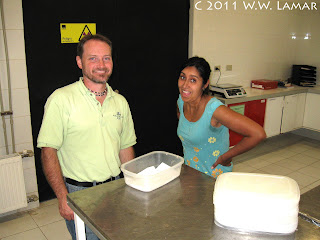Epipedobates tricolor | Phantasmal poison frog (Morispunga morph) Male transporting tadpoles.
Frogs are among the most diverse groups of vertebrates . They occur globally from the tropics to the sub-arctic regions, and in just about every conceivable habitat, one can find a frog species that has specialized to live there. Despite this diversity, it is generally easy to tell a frog from any other type of animal. Thanks, in part, to the absence of a tail like most other critters. Due to the range of unique requirements these habitats demand of frogs, each species has specialized behaviors and/or characters and some of these specializations are quite spectacular. Today, we are featuring two species which possess unique, prominent physical attributes. First, and one of the author's favorites is the Phantasmal poison frog | Epipidobates tricolor , which has been living, breeding, singing and hopping around the Fuqua Conservatory since 1995. Most poison frogs (family: dendr...








Comments
Post a Comment